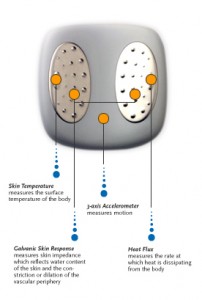 Sorry about the headline, the 2.0 tag is getting waaay too much air time of late – that aside, I was reading an interesting article on some of the technology advances in the realms of health monitoring.
Sorry about the headline, the 2.0 tag is getting waaay too much air time of late – that aside, I was reading an interesting article on some of the technology advances in the realms of health monitoring.
A few years ago I was researching some of the advances within medical monitoring and how the devices could be integrated into a connected home*. At that time we were looking at near field communication devices which would upload via Zigbee or a similar low range, low power technology, as well as a concept toilet in Japan which measures and reports on glucose levels detected in ones urine.
Anyway, with the advent of specifically addressable devices thanks to IPV6, as well as advances in near-field and Personal Area Networking (PAN), the reality may well be closer than we thought.
- Shoes already talk to your phone/music player/GPS mapping your exercise and posting the results to Twitter for the enjoyment(?) of your followers
- Heart monitoring technology has been available in consumer devices for a number of years, I even recall an article over on Gizmodo for USB connected blood pressure monitoring devices.
The self-care market is hotting up, especially in this difficult time where concern about the economy and ones future financial well-being may well be impacting on peoples immediate, and long term health.
Some of the more interesting companies making headway in enabling health monitoring are:
- Proteus Biomedical who have just released their platform for body monitoring dubbed ‘Rasin’
Proteus ingestible event markers (IEMs) are tiny, digestible sensors…Once activated, the IEM sends an ultra low-power, private, digital signal through the body to a microelectronic receiver that is either a small bandage style skin patch or a tiny device insert under the skin. The receiver date- and time-stamps, decodes, and records information such as the type of drug, the dose, and the place of manufacture, as well as measures and reports physiologic measures such as heart rate, activity, and respiratory rate.
All of the data collected by the Proteus system can be sent wirelessly to the doctor for remote monitoring. The system is currently in clinical development.
- Body Media have their Sensewear device which allows “monitoring of calories burned, dietary intake, duration of physical activity and sleepâ€. It’s USB connected, which is fine, but I’d prefer to see a device that automated the processes for more ‘real-time’ monitoring and feedback possibilities – all in time I guess and the biggest issue will be size and battery life, just like every other mobile device.
- The Toumaz device recognises the ‘you must remember to upload your data’ issue, and has created their ‘Sensium’ device with the capability to stream the data to a logging device (within ~5m). This is the kind of thing I’d be looking for, but would want to incorporate into a meshed network within the bounds of a home (or health-club) to make truly useful.
Of course, with my day-job hat on as a Security type person, the biggest concern, given the very personal nature of this data, is how security will be treated. Recent reports attribute [a potential link to] cyber terrorism, with the ability to cause widespread blackouts. Whether that threat is credible or a causative action with the cited 2003 US blackouts is debatable. What isn’t up for debate however is the fact that as more systems which control or influence our lives become network aware, the more this risk profile will inflate. How we deal with this is something which needs to be built into the monitoring protocols from the outset – especially with the potential to link into the online health record repositories being toyed with by big players Google and Microsoft.
Comments?… Fear? Uncertainty? Doubt?
*A ‘connected home’ is what marketers refer to as a ‘future home’ – a term which I really hate as I agree with William Gibson “…the future is already here. It’s just not very evenly distributed…†(time code 11:55).
Comments
2 responses to “Health Monitoring 2.0?”
Interesting (and not *entirely* unrelated) article <ahref=”http://nursingassistantguides.com/2009/50-successful-open-source-projects-that-are-changing-medicine/”>here on successful open-source projects within the field of medicine.
Microsoft wins a contract to create the records management system for the Mayo Clinic – it will be interesting to see how this goes.